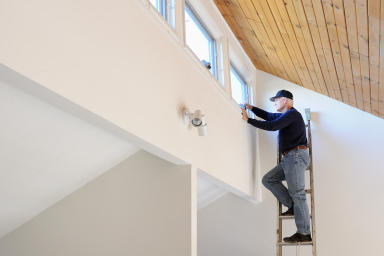Home Remodeling for People with Disabilities: What You Need to Know
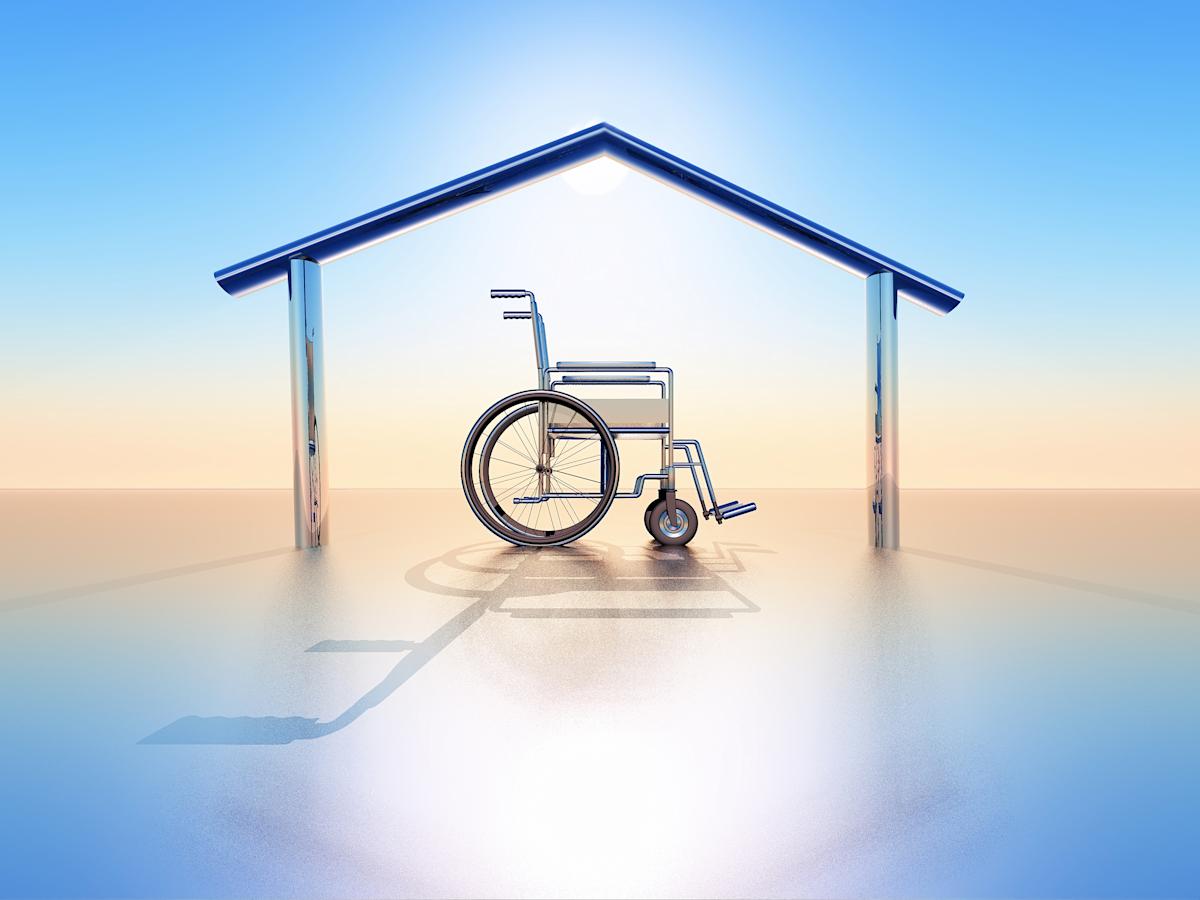
For many people, owning and maintaining a home is one of the most significant investments they will ever make. But for individuals and veterans living with disabilities, or seniors aging in place, the fact that much of the world isn't built to accommodate their needs magnifies the value of a comfortable home. It’s vital they and their loved ones have access to the best resources that can help to make their homes livable and enjoyable.
Unfortunately, without access to the right resources, creating a comfortable home can be an expensive task.
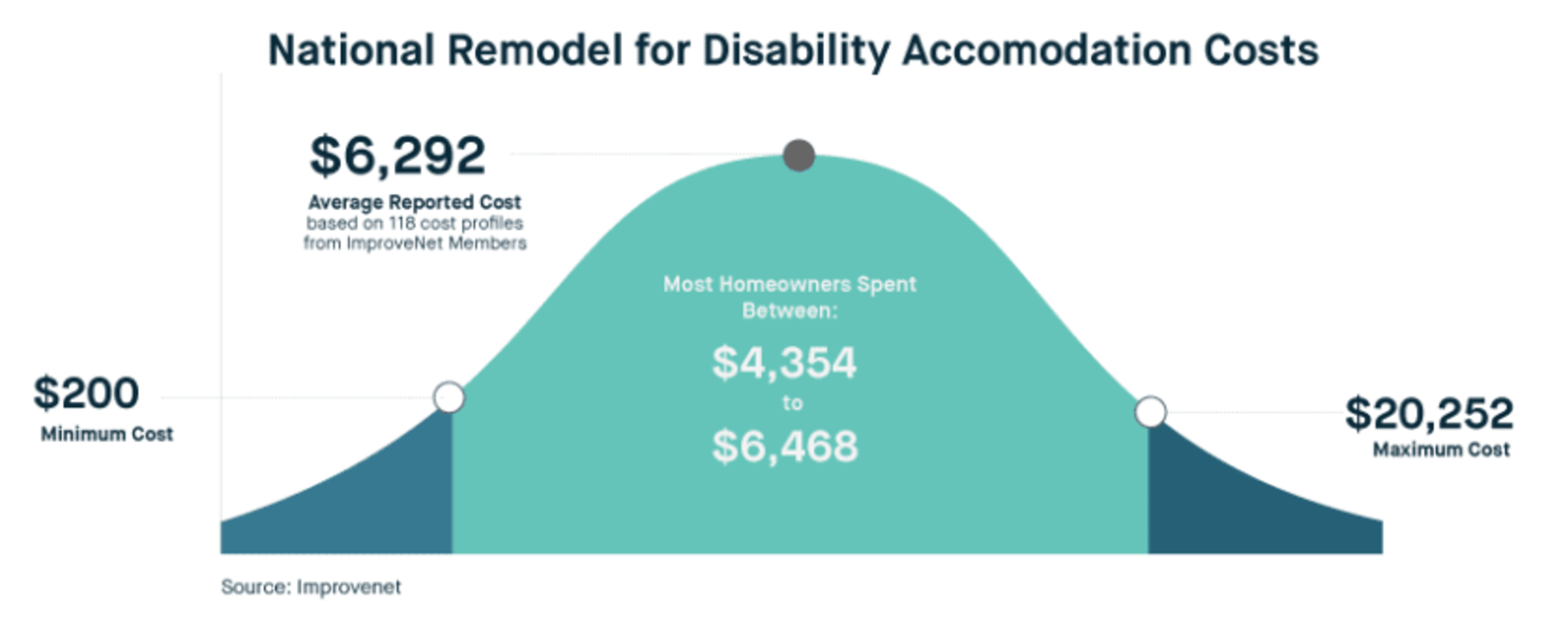
I’ve spent more than seven years working in the construction, home improvement, and health and safety fields, and created this resource to cover essential information for disability home remodeling. This guide will identify legal and financial resources available to citizens, seniors, and veterans, offer tips to hire the right home remodeler, and suggest modifications throughout the home to make the space as accommodating as possible.
Find Home Remodeling Services Near Me
Federal Resources for Veterans, Seniors, and People with Disabilities
While the details of any remodeling project depend on specific needs, the issues of cost, available assistance programs, and legal rights should be answered before you get started. Fortunately, there are many resources available nationwide specifically for people who are elderly or disabled.

The most relevant law regarding residential remodeling for disability is the Fair Housing Act. While you may have to pay remodeling expenses out of pocket and return the property to its original condition upon leaving (if you’re leasing), the law states that a housing provider can’t refuse reasonable modifications to your dwelling or common use areas, or refuse reasonable accommodations to rules, policies, practices or services if necessary for equal use of the housing.

source:(https://www.hud.gov/sites/documents/FHEO_BOOKLET_ENG.PDF)
Other important federal laws that could impact your home modifications include:
Rehabilitation Act of 1973 (Section 504) (1)
Title II of the American Disabilities Act of 1990 (2)
Age Discrimination Act of 1975 (3)
Architectural Barriers Act of 1968 (4)
The importance of the first three laws listed above is paramount to veterans, seniors, and disabled persons who are undertaking a remodeling project, particularly when they're hoping to obtain grants or other funding from federal and public sources. These laws ensure the operators of federal and public funding programs can't discriminate against applicants.
The Architectural Barriers Act is also important for those with disabilities, as it outlines accessibility requirements for those making home modifications or constructing a new home when using federal financial supports.

If you’re planning a home remodel for a person with a disability or special need, there are many support programs to choose from.
FHA Loans
The Federal Housing Administration (FHA) provides several home loan options. These loans each serve different purposes. Several FHA loans can be used to remodel or modify an existing home to make it more suitable for seniors, veterans, or a person with disabilities.
203(k) Rehabilitation Mortgage
203(k) Rehabilitation Mortgages (5) can be used to remodel an existing home or to purchase a home that requires repairs or upgrades. This insured home loan, which is managed and issued by the U.S. Department of Housing and Urban Development (HUD), can be taken as a 15-year or 30-year fixed-rate or adjustable-rate mortgage. Loans can be used for a variety of home improvements, including:
Adding accessibility features such as a wheelchair ramp
Widening hallways or doorways
Room additions
Basement or attic developments
Eliminating health hazards like lead paint or asbestos
Upgrading in-home systems such as electrical, plumbing, or HVAC
Exterior upgrades or repairs
A 203(k) Rehabilitation Mortgage can be used to make these upgrades to single-family or multi-family homes, as well as to mixed-use residential properties that contain commercial spaces. On top of that, individuals can use this type of loan to convert multi-family properties to single-family residences or to move an existing home onto a safer, more accessible site.
To obtain this loan, one should search for a HUD-approved lender who can provide assistance with everything from securing financing to determining which repairs are eligible and necessary. HUD features a list of approved lenders, which includes banks and mortgage brokers, on its website.
Streamlined 203(k) Refinancing
For those who've purchased their original home with a Section 203(k) loan or another type of FHA loan, a streamlined refinance (6) option might be available to help carry out new repairs and home modifications. Under this program, the original FHA loan can be refinanced with limited underwriting, provided it meets certain requirements. That includes:
The current mortgage is already insured by the FHA
The mortgage isn't delinquent
The refinance offers a tangible benefit to the borrower
Cash withdrawn from the mortgage won't exceed $500
Some streamline refinance lenders provide borrowers with no-cost options, which usually come with higher interest rates. It's important that anyone looking to use this option takes time to understand what's being offered by their lender, as well as how much they can afford in monthly mortgage payments and closing costs.
Title 1 Insured Loans
A Title 1 Insured Loan (7) is insured by HUD and helps borrowers to finance modifications and home improvements in varying sizes. The loan is issued by a bank, or other lending institution, and backed by the federal government. It's strictly for remodeling and doesn't provide financial assistance with new home purchases. A Title One Insuranced Loan can be used t make modifications to single-family or multi-family residential homes that have been occupied for at least 90 days. These loans can also be used for nonresidential purposes.
Title 1 Insured Loans have fixed interest rates and no prepayment penalties. While they're available in varying amounts, any loan that exceeds $7,500 must be secured by a mortgage or a property deed. More information about Title 1 Insured Loans can be accessed by contacting (800) 767-7468.
Determining the best FHA loan for you will depend on the amount you need to finance, how much equity you have in your home, and much more. If you're unsure of which option to pursue, HUD sponsors housing counseling agencies throughout the country and provides an online search tool to find a local office.
Medical Tax Deductions
If a person needs to install specialized medical equipment or make modifications that make their home more accessible, the IRS may allow the cost to be deducted as a Capital Expense (8) on their next tax return. This qualifies as a medical or dental expense. Eligible improvements include:
Constructing or installing wheelchair ramps
Widening doorways or hallways to make the home more accessible
Installing railings or support bars
Lowering or modifying cupboards, cabinets, and other fixtures in the home
Modifying or installing alarm systems
Replacing or adding hardware on doors or windows
Grading the ground outside the home to enhance accessibility
It's important to note that these deductions are only considered eligible when they're required to make the home more accessible for a resident with a disability. Anyone who's hoping to cover remodeling costs with tax deductions should consider speaking to a financial advisor, who could also provide information about other funding options.

Federal Funding for Veterans
Beyond these broad types of financial resources, the federal government also offers many resources for more specific groups.

source: https://www.hud.gov/sites/documents/FHEO_BOOKLET_ENG.PDF
The Department of Veterans Affairs (VA) offers several programs which may be useful to veterans, including the Specially Adapted Housing (SAH) and Special Housing Adaptation (SHA) Grants, which have similar names but different eligibility requirements.(9)

source: https://www.hud.gov/sites/documents/FHEO_BOOKLET_ENG.PDF
The VA also offers Cash-Out Refinance Home Loans (10), enabling veterans to take cash out of their home's equity and use it for home improvements. The Cash-Out Refinance option can also be used to refinance non-VA loans into VA-backed loans.
Federal Funding for Seniors
Seniors can also access an array of federal funding resources to help them create more accessible, safe homes.
Eldercare Locator
The U.S. Department of Health and Human Services (HHS) provides an online Eldercare Locator (11) to help seniors and their loved ones find the right resources for their particular situation. Resources available here include financial assistance programs — both state and federal — such as grants and loans that help with home modification costs.
Section 504 Home Repair Program
The United States Department of Agriculture (USDA) provides grants for low-income seniors to help them make necessary home modifications (12), including those needed to accommodate disabilities. This option is best for seniors who can't secure credit or other funding. To qualify for a USDA grant, there are stringent requirements:
Only the homeowner can qualify and they must occupy the home
The beneficiary should be unable to qualify for credit and unable to repay a home loan
Family income must be 50% below the area's median income
Grant recipients must be aged 62 or older
The maximum amount of a USDA grant is $7,500. USDA also provides home loans up to $20,000 which can be combined to cover expensive repairs. Grants issued by the USDA need to be repaid if the home is sold within three years of funding and loans can be repaid over a period of up to 20 years with a 1% fixed interest rate.
Low Income Home Energy Assistance Program (LIHEAP)
LIHEAP (13) is funded by the HHS's Office of Community Services. The program helps low-income households make energy-related repairs, such as window replacements and other weatherproofing, provided they meet income requirements and at least one home occupant is elderly, living with a disability, or younger than six years old.
Other Funding and Legal Resources
On top of what's been listed above, there are plenty of other private and government home improvement grants that are available across the U.S. for those with disabilities.
Seniors can contact their local Area Agency on Aging (14) to access home modification programs and financial resources available in their region, while organizations such as Rebuiding Together (15) and Volunteers of America (16) provide home repair grants and services for those who need it most.
Additionally, there are plenty of options out there for veterans and active military members, Native Americans, and other populations that might require help with home renovations. For a list of available home modification grants, visit Expertise.com's guide to Private and Government Home Improvement Grants.
Funding and Legal Resources Outside the United States
Many other nations across the globe have similar provisions to support seniors and those with cognitive and physical disabilities. Anyone else considering home remodeling with disabled needs in mind would be well served to seek help from regional authorities on the topic. As a first step, you can consult the Disability Rights Education & Defense Fund’s list of laws broken down by country. (17)
Planning Your Remodeling Project
Hiring an Expert
More important than having a vision for your project is hiring an expert home remodeler. They can get the job done right and have the ability to customize your home so it meets your needs.
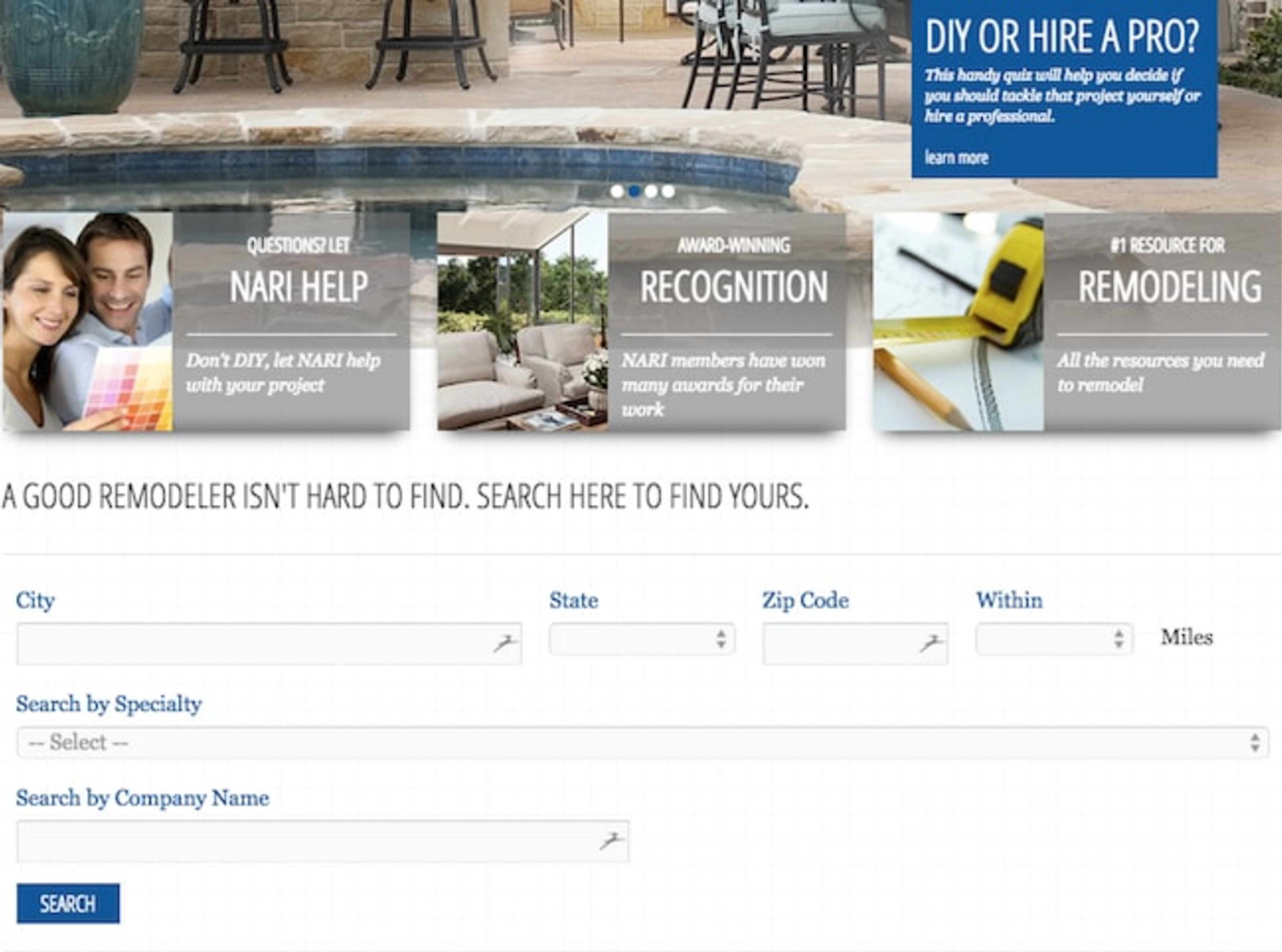
When searching for a disability remodeler, you might want to find a Universal Design Certified Professional (UDCP) (18) through the National Association of the Remodeling Industry (NARI). While there are many other viable options, finding certified experts is an easy way to access qualified candidates. Whether you choose a certified professional or not, before you hire anyone make sure to thoroughly explore your options. You can review our guide to hiring home remodelers for steps to take before agreeing to any contract.
Incorporating Universal Design Concepts
Universal Design is a valuable concept (19) for disability remodeling because it emphasizes “the design of products and environments to be usable by all people, to the greatest extent possible, without the need for adaptation or specialized design. This concept involves creating designs with the following factors in mind:
Usefulness for individuals with all levels of ability
Flexible use to accommodate varying preferences and abilities
Simple, intuitive use that's easy to understand regardless of experience
Necessary information is easily communicated to the user regardless of sensory abilities
Minimization of hazards in the event of an accident
Minimal physical effort
Appropriate space for use regardless of ability
Getting Started
Now that you've considered regulations, funding, and who you want for the job, it is time to think about what specific modifications might be beneficial to you or your loved ones. While it’s beneficial to have an idea of what you'd like to achieve, you should take time to fully evaluate your needs above anything else. Use an accessibility checklist (20) to determine what modifications your home might require.
Now that you have considered regulations, funding, and who you want for the job, it is time to think about what specific modifications might be beneficial to you or your loved ones.
Creating Accessible Approaches, Landscapes, and Doorways
Your first remodeling consideration should be how people will navigate into, out of, and through your home. Your rooms can be as comfortable and accommodating as possible, but this won’t matter if you or others can’t easily enter, exit, and move around.
Stairways and Building Access
When looking at alternatives to stairs for people with mobility issues, the two primary options are ramps and lifts. In my experience, ramps are generally less expensive, more reliable, and less prone to needing repairs due to not having electronic or other moving parts. If you’re concerned about costs, or only have a small rise to navigate, you may want to consider a portable ramp.
Depending on the amount of vertical rise to your entryway and the amount of space you have to work with, a ramp may not be viable. Instead, a lift may be necessary. Several types of list exist, including:
Inclined platform
Vertical platform
Stairlifts
Hybrid lifts
A company specializing in lifts can help you select the best option. A good way to ensure you’re working with a reputable vendor is to check with your local Better Business Bureau chapter. (21)
While remodeling your entryways and exits, you should also survey your yard for ways to make it more accommodating. Leveling the ground, installing wheelchair-friendly paths, and removing potential hazards so everyone can enjoy the outdoor spaces are important touches that often go forgotten.
Interior and Exterior Doorways
Doorways should ideally be 36 inches wide or larger to allow for a wheelchair to comfortably maneuver through. A 32-inch wide door can also suffice as an absolute minimum if a larger door is not feasible, but it will allow little room to maneuver. (22)
Depending on the home, widening doors may require extensive remodeling. Before removing any door frame completely, consider installing either wide throw hinges or swing clear hinges, both of which can help add space to the doorway. Depending on the room, completely removing the door and hinges might not be a problem. In the case of bathrooms or other locations where privacy is a concern, a potential solution is to install a curtain or screen, or depending on the dimensions of the wall, a pocket door. If you go this route, consider a wall-hung pocket or sliding door, as they are easier to open than those installed in-wall.
You'll also want to consider installing doors with handles and locks at lower heights, and switching out traditional door knobs for lever-handle pulls. A more expensive option is installing automatic door openers, but this may be out of your budget. You should also think about the cost and likelihood of needing future repairs if you choose to go this route.
A Note on Exterior Doors: For exterior doors, in particular, look into installing a peephole or small view panel in the door at an accessible height. If you choose to install a window or view panel though, make sure that it's far enough away from the door handle to not create a potential security issue. Alternatively, use an intercom to identify visitors.
Lastly, when it comes to doors, minimize the size of doorstops and thresholds. Avoid using thick doormats, as they could cause trouble for wheelchairs and pose a potential tripping hazard for walkers with poor mobility or impaired vision.
Disability Friendly Flooring
Flooring isn't always considered when remodeling around a disability or special need, but it is important (23). Floors should be made from durable, smooth, and non-porous materials that aren't prone to buckling or bunching. These features will provide a surface that wheelchairs can easily roll on with minimal risk of slips, trips, or falls. Additionally, these materials are easier to clean, which is important in the case of homes with service animals.
The least expensive and most durable materials are usually either vinyl or laminate flooring. Avoid ceramic and stone tile outside the kitchens and bathrooms — if used at all, make sure it's slip-resistant. Wood flooring can work as well but is generally more expensive, difficult to maintain, and less resistant to wear. An additional benefit of harder floorings for those with vision impairment is that noises are more easily heard in the home.
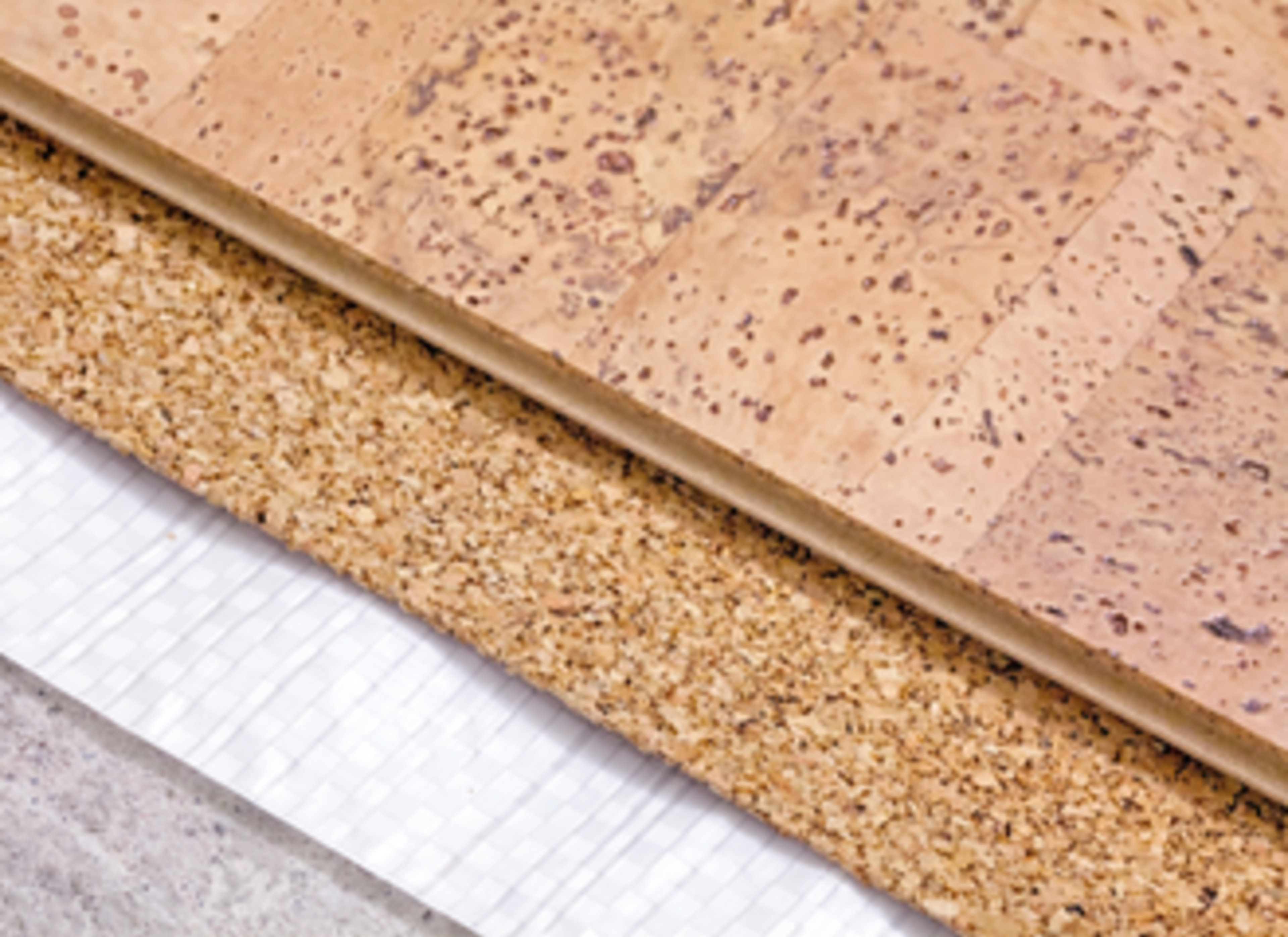
Another option to consider is cork flooring. Cork flooring looks stylish and is easy to clean. It's firm and level, and more forgiving to falls than many of the other flooring types mentioned above. However, due to its soft nature, it's typically not recommended for wheelchairs due to wear issues from the amount of pressure exerted by the wheels.
Regardless of what type of flooring you choose, it's good to explore all your options and consult an expert to discuss your particular needs. There are many online resources available if you wish to do some additional research on your own.
Electrical, Lighting, and Smart Home Technology
At the most basic level, make sure all electrical controls are as accessible to users as possible (24). This may mean finding controls that don't require fine manual dexterity to operate. When controls can't be moved, consider installing devices with remote controls. Controls to think about relocating include:
Light switches
Ceiling fans
Thermostat controls
Electrical outlets
Communication devices
Perhaps less obvious, but still important, is the location and angle of the lighting itself. Light locations, angles, and reflections that work well for some could shine directly into the faces of others, so you should consider redirecting lighting to make it comfortable for everyone.
Smart home devices can also benefit those with disabilities. Using tools such as Bluetooth or Wi-Fi-enabled systems, as well as those that can be controlled with devices such as Amazon Alexa or Google Home can make it easier to control lighting, climate, and electronic devices throughout the home.
Accessible Bathrooms
Of all the rooms in the house, bathrooms are among the most important spaces to remodel for seniors and people with disabilities. Doing so not only affords as much privacy and independence as possible, but it's also extremely important for safety reasons, particularly when entering or exiting the shower or bath, or using the toilet.
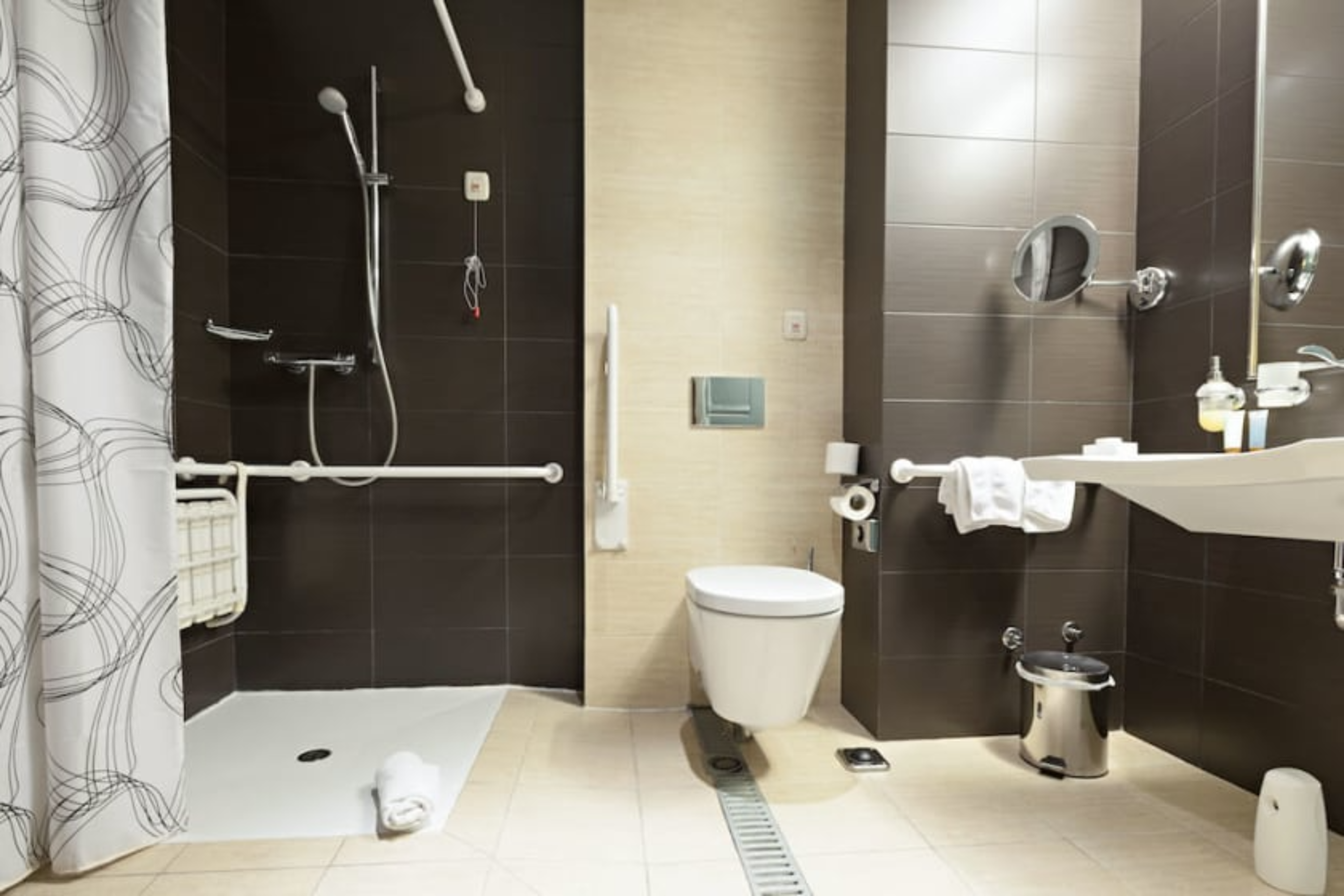
Along with the door width requirements mentioned earlier, the room, in general, should remain open enough to allow comfortable maneuvering. Depending on how your bathroom is laid out, this could require plumbing reroutes.
Sinks
Wheelchair users may find it easier to access sinks when they're higher than normal and have open space underneath. This enables the ability to roll straight up to the sink rather than having to reach or stretch over.
If the existing sink has a cabinet base, it may be possible to remodel the center part of the cabinet and create the same effect without purchasing a new one. Install cabinets in-wall as much as possible to conserve floor space but make sure they're easy to reach. Similar to doors, faucets with lever-type handles rather than knobs are easier to use, and it may even be worth investigating touch-operated faucets.
Toilets
Toilets should also have higher than standard seat heights for more ease and less distance traveled when transferring between the toilet and a wheelchair, or sitting down and standing up. Install grab bars on both sides of the toilet, and depending on the extent of the remodel, consider rearranging the room to where a wheelchair can comfortably fit near the toilet.
Showers and Tubs
There are many different options for showers and tubs, and the best choice will be dependent on your budget and whether you're completely remodeling or making small modifications.
Substantial remodeling solutions include installing a tub with a vacuum-sealed door, enabling direct walk or roll-in entry, or an open shower that's curbless or has a minor curb. If neither of these options is feasible, you can also buy various types of specialized lifts. Simpler steps that every remodeling budget should include for bathrooms are installing a grab bar, handheld showerhead, and lever-handled water valves.
Accessible Kitchens
Many of the principles that apply to bathrooms also apply to kitchens. Install wheelchair-friendly sinks, stoves, cabinets at an accessible level, and lever-handled valves. For maximum ease of use, also make sure that:
Sinks are shallow-basined
Faucets have attached hoses for easier maneuverability
Pipes below the sink are insulated to prevent the risk of scalding
It is also worth exploring ADA-compliant appliances, as many may need little-to-no other remodeling.
Cabinets should also feature:
Drawers for cleaning supplies near the sink
Cooking utensils near the stove to reduce the need for moving throughout the kitchen
Having adequate lengths of countertop is more important than depth
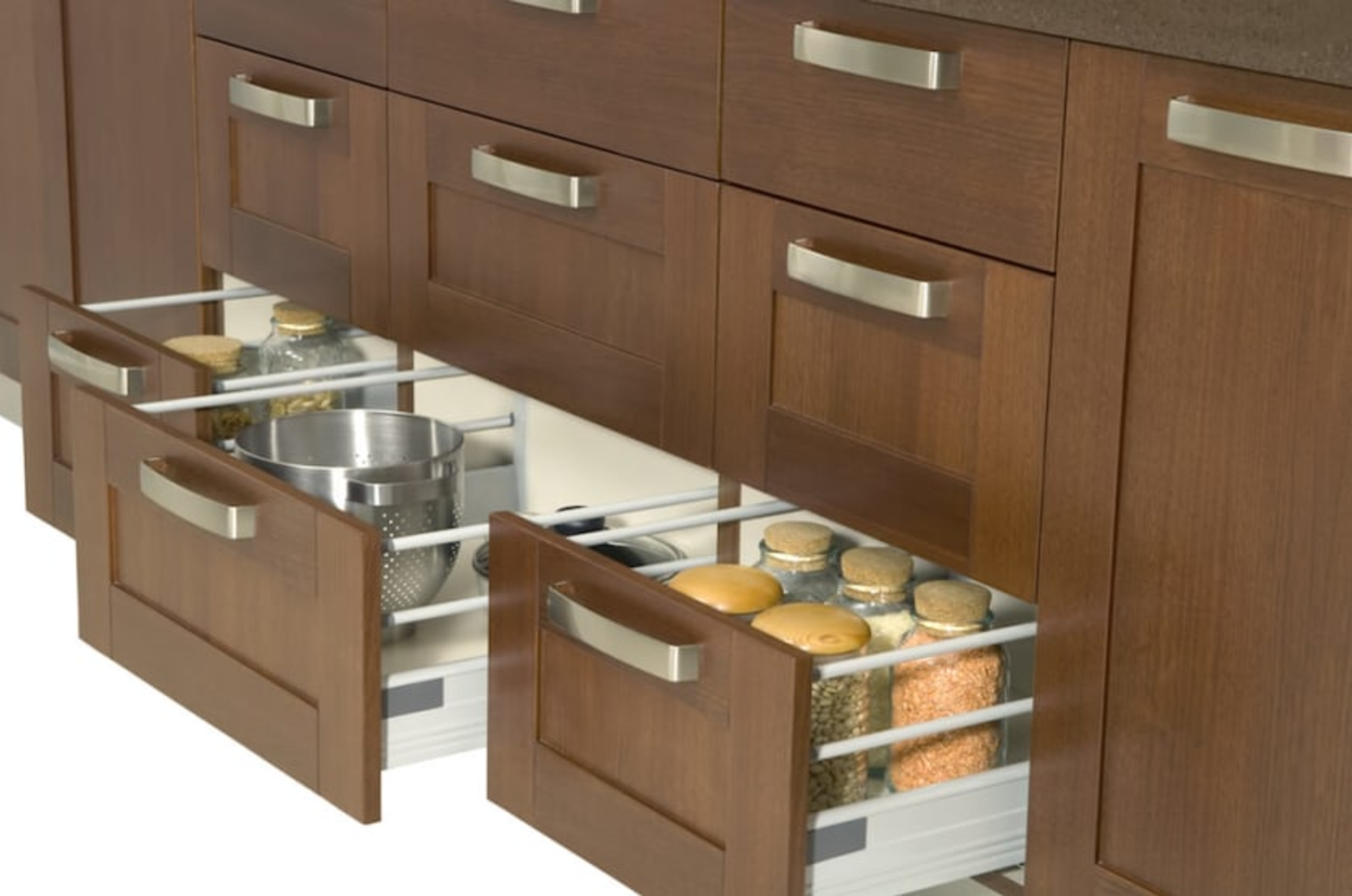
Other kitchen remodeling options include motorized adjustable-height cabinets, countertops, and sinks. While these larger features may fall out of the price range for many, they're worth investigating if your budget allows.
Remodeling for People with Non-Physical Disabilities
Many of the basic accessibility and safety-focused remodeling tips will remain of value to seniors and people with disabilities. That said, you should also consider particular renovations for individuals coping with cognitive disabilities such as an autism spectrum disorder, Down's syndrome, dementia, and Alzheimer's disease that present significant hurdles beyond mobility.
It's imperative in these situations to take into account how features stimulate all the senses and emotions. Being mindful of how things around the home feel, look, smell, sound, and even taste significantly impact both the lives of those with disabilities and any loved ones caring for them.
Caregivers often have the most knowledge about the obstacles their loved one face, but readily available experts can provide special insight into changes you can make around the home. Because of this, your best next step after making the modifications you have already thought of is to contact a local agency that can assist you through one of the sites mentioned earlier.
Conclusion
While the challenges presented in this guide are significant, they're not insurmountable. Creating a comfortable home is achievable with time and work, and there plenty of resources available to assist you and your loved ones get there.
Find Home Remodeling Services Near Me
I hope this guide offered insight into the many financial and legal resources at your disposal, and some of the major considerations for a few core rooms in every home. If particular remodeling options that interest you, but they weren't mentioned, or you have recommendations based on situations you've encountered, feel free to weigh in with a comment below.

Michael SleddAuthor
Michael Sledd has worked for over 7 years in the construction, home improvement, and health and safety fields. He is currently a program manager responsible for identifying and addressing ADA (Americans with Disabilities Act) concerns, and overseeing various facilities, greenbelts and nature preserves at a Parks and Recreation department for a large municipality.
Michael earned a Master's of Applied Geography with a focus on Resource and Environmental Studies from Texas State University-San Marcos.
Sources
- The Rehabilitation Act of 1973
- State and Local Governments (Title II)
- Age Discrimination Act of 1975
- Architectural Barriers Act (ABA)
- 203(k) Rehab Mortgage Insurance
- Streamline Your FHA Mortgage
- About Title I Property Improvement Loans
- Publication 502, Medical and Dental Expenses
- Disability Housing Grants for Veterans
- Cash-Out Refinance Loan
- Eldercare Locator
- Single-Family Housing Repair Loans & Grants
- Low Income Home Energy Assistance Program (LIHEAP)
- Area Agencies on Aging
- Rebuilding Together
- Volunteers of America
- Disability Rights Education & Defense Fund International Laws
- Universal Design Remodeling
- The Principles of Universal Design
- Home Accessibility Checklist
- Better Business Bureau
- ADA Compliance - Doors
- ADA Ground & Floor Surfaces
- 205 and 309 Operable Parts

